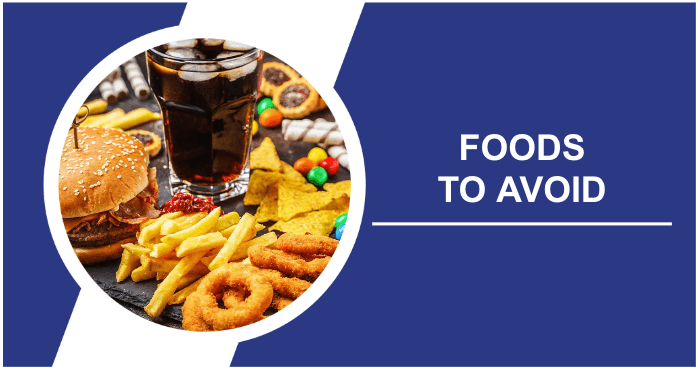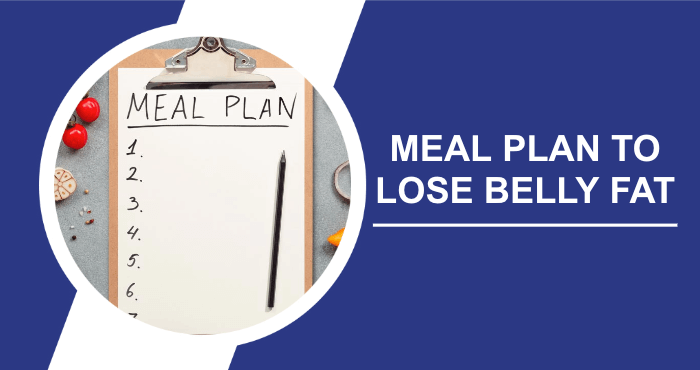The extra weight around your waist, commonly known as excess visceral abdominal fat, is a precursor to serious health problems such as cancer, cardiovascular disease and type 2 diabetes. Losing this type of fat not only makes you feel more relaxed and less bloated, it also boosts your self-confidence. Achieving a slimmer stomach takes dedication and effort.
Commitment to a rigorous exercise programme and significant lifestyle changes, including changing your diet to include more nutritious foods, are essential. To support your efforts, consider using one of these effective fat-burning supplements. In this article, we will look at some of the most beneficial, nutrient-rich foods to help you achieve a slimmer waistline. Read on to discover the healthiest meal options for breakfast, lunch and dinner.
7-Day Diet Strategy For Reducing Belly Fat This straightforward plan, set at around 1,200 calories per day, is designed to support a weight loss goal of around 1-2 pounds per week. The 7-Day Diet focuses on fresh produce, supplemented with foods known for their ability to burn extra calories in the abdominal area (such as artichokes, chickpeas, avocados, etc.).
Following this diet for belly fat allows you to strengthen your intestinal flora. This will help reduce bloating and improve your mental and physical wellbeing. You can improve your gut flora by adding probiotic-rich foods such as kombucha, kefir and yoghurt to your diet. It's also important to increase your fibre intake.
As well as improving gut flora, dietary fibre is an important aid to weight loss and maintaining a slim physique over time. Foods such as pulses, wholemeal cereals, vegetables and fruit have a high fibre content, which keeps you feeling fuller for longer.
Is A Meal Plan Important For Losing Belly Fat?
Yes, a meal plan is essential for losing belly fat. It ensures a balanced intake of nutrients while controlling portions and calories. Focusing on whole foods, reducing sugar and refined carbohydrates, and including protein- and fibre-rich foods can target belly fat and help you lose weight and improve your overall health.
7 Day Diet Plan To Reduce Belly Fat
Here’s a carefully designed one-week diet plan to help you lose excess fat around your abdomen:
Day 1
- Breakfast: Turkey breast (200g), grilled, accompanied by cucumber slices (¼ cucumber) and a quarter of an avocado.
- Mid-morning snack: Red pepper (½, sliced) served with two hard-boiled eggs, spiced.
- Lunch: Shrimps (150g), grilled, with tomatoes, a mix of green salad leaves and half a tablespoon of olive oil.
- Afternoon snack: A combination of five almonds and sliced turkey breast (100g).
- Dinner: Steamed broccoli with a portion of chicken breast (100g).
2nd day
- Breakfast: Steamed spinach with grilled tomatoes and three protein omelettes.
- Mid-morning snack: Brazil nuts (five) with turkey breast (100g).
- Lunch: Steamed asparagus with green salad and chicken breast (150g).
- Afternoon snack: Cucumber (¼, sliced) with turkey breast (100g).
- Dinner: Choose from steamed broccoli or oriental greens, served with a grilled skinless duck breast.
3rd day
- Morning meal: A mix of tomatoes, two scrambled eggs (two whites, one yolk) and green beans.
- Mid-morning snack: A quarter of cucumber with 100g of sliced turkey.
- Lunchtime meal: Baked cod fillet, spinach, tomato, salad and half a tablespoon of olive oil.
- Afternoon snack: Half a grilled courgette and 100g chicken breast.
- Evening meal: 100g chicken breast stir-fried with green vegetables and half a tablespoon of olive oil.
Day 4
- For breakfast: Roasted peppers, paired with a grilled haddock fillet and some courgettes.
- Mid-morning snack: Sliced tomato with chicken breast (100g).
- Lunch: Steamed broccoli, dressed with half a tablespoon of olive oil, served with turkey (150g) and a fresh green salad.
- Afternoon snack: A handful of pecans (5) with chicken breast (100g).
- Dinner: Steak (150-200g) served with steamed broccoli and green beans.
Day 5
- Breakfast: Prepare an egg yolk free omelette. Add a handful of spinach and about 75g of chopped mixed peppers.
- Mid-morning snack: 100g cooked chicken combined with ½ a sliced red bell pepper.
- Lunch: A single grilled chicken breast with ¼ tbsp olive oil. Accompanied by green beans, red peppers and a variety of salad greens.
- Afternoon snack: 100g cooked turkey breast with ¼ of a sliced cucumber.
- Dinner: 100g grilled chicken with steamed broccoli.
Day 6
- Morning meal: Bunch of spinach with 100g smoked salmon.
- Mid-morning snack: Half a yellow pepper and 100g sliced chicken.
- Lunchtime meal: Half a yellow pepper and 100g chicken breast marinated in half a tablespoon of olive oil.
- Afternoon snack: Quartered avocado slices spread on 100g of grilled turkey.
- Evening meal: Steamed broccoli and spinach, accompanied by two escalopes or a single grilled lamb steak.
Day 7
- For breakfast: Sauté a bunch of kale and pair with a baked chicken breast.
- Mid-morning snack: 100g turkey breast with half a sliced green pepper.
- Lunch: A baked haddock fillet with a mixed green salad dressed with ½ tbsp olive oil.
- Afternoon snack: 100g cooked turkey breast with 75g steamed broccoli.
- Dinner: Enjoy steamed green beans with a salmon fillet garnished with chopped dill.
Foods To Avoid While Trying To Lose Belly Fat

Before we look at the foods that are good for a flat belly diet, let’s first look at the foods that should be avoided. This action is essential for reducing belly fat. These are the hidden instigators of your stubborn belly bulge that you’re trying so hard to eliminate:
1. Sugary Treats
It’s not hard to see that treats like Coca-Cola, ice cream and chocolate are not ideal for frequent consumption. These items are low in nutrients but high in energy. This means they have more calories than micronutrients. Sweet treats are often consumed in excess, which leads to an increase in visceral fat if eaten regularly.
2. Refined Carbohydrates
Items such as French fries, croissants and white bread are notorious for rapidly raising your blood sugar levels. In addition, their lack of fibre makes you feel hungrier and encourages you to eat more than you need. Another aspect of refined carbohydrates is that they’re high in calories. This means they’re not ideal for frequent snacking. If you are trying to lose belly fat, prioritise removing all refined carbohydrates.
3. Alcohol
Frequent alcohol consumption will add a few extra centimetres to your waistline. Just so you know, a single gram of alcohol has at least seven calories. So a typical alcoholic drink contains seven calories. Given that the average drink contains around ten grams of alcohol, you’re essentially consuming 70 calories with every drink you have. Of course, this can vary depending on the alcohol content of your drink.
What Are The Benefits Of A Meal Plan?
A meal plan offers many benefits, including ensuring a balanced diet rich in essential nutrients, saving time and money by reducing the time spent shopping and minimising food waste, and reducing the daily stress associated with making food choices. It encourages healthier eating habits by favouring home-cooked meals over processed or fast foods, helps manage portion sizes for effective weight management, and introduces a variety of foods into the diet to keep meals interesting and nutritionally diverse.
Rules For Losing Weight And Removing Belly Fat
While following your meal plan, it’s important to follow these basic rules and dietary advice:
- Choose meals that are gut-friendly
- Include good fats in your diet
- Eat a diet low in carbohydrates
- Make sure your meals are high in fibre
1. Eat Gut-Healthy Foods
Research suggests that members of the Lactobacillus family may help reduce belly fat. The study also showed that consuming yoghurt containing elements of these beneficial gut bacteria reduced total body fat by about 3 to 4 per cent over a six-week period. Taking probiotic supplements could also help you achieve your goals for losing extra belly fat. In a three-month study, women who took probiotics lost almost 50 per cent more weight than those who took placebo tablets.
2. Include Beneficial Fats
In order to reduce your waistline, it’s important to increase your intake of fats, especially healthy fats. Regular consumption of foods rich in healthy fats, such as avocados, can help lower your body mass index (BMI) and shrink your waist. Research has shown that omega-3-rich foods, such as oily fish, help to reduce both visceral and liver fat. Aim to increase your weekly intake of fish such as anchovies, mackerel, sardines, herring and salmon.
3. Adopting A Low-Carbohydrate Diet
Research shows that women who followed a strict low-carbohydrate diet for five years had significantly smaller waists than those who did not. Adopting a low-carb approach also means increasing your protein intake. A diet rich in protein, including meat, nuts, legumes, dairy products, seafood, oily fish and eggs, typically results in a reduction in abdominal fat.
This diet improves metabolism and increases satiety. Diets high in protein are beneficial for maintaining muscle tissue and providing essential energy to support your efforts in abdominal fat reduction exercises.
4. Make Sure Your Meals Are High In Fibre
Including soluble fibre in your diet is an effective way to reduce stubborn belly fat. Recent research has shown that consuming at least 10 grams of fibre a day correlates with a 3.7% reduction in fat around the midsection. This was associated with a 10% reduction in total calorie intake and a weight loss of 2kg over four months. Fruit, vegetables, chia seeds, psyllium husks, oats and beans are ideal sources of fibre for a slimming diet.
Is It Dangerous To Follow A Meal Plan Every Day?
Following a meal plan every day can be beneficial if it’s balanced and tailored to your nutritional needs. However, it can be harmful if it lacks variety and leads to nutrient deficiencies or an unbalanced diet. Over-reliance on a strict eating plan without flexibility can also affect mental wellbeing and your relationship with food.
It’s important to ensure that the plan is varied, meets all dietary requirements and allows for some flexibility. It’s a good idea to consult a dietician or nutritionist to create a meal plan that is safe and effective for long-term health.
Top Foods To Help Reduce Unwanted Belly Fat
1. Eggs
High in protein, eggs are ideal for any meal, whether breakfast, lunch or dinner. Regardless of how they are prepared, they always provide a balanced nutrient profile. Eggs have an ‘ideal’ amino acid composition, with perfect proportions. In fact, eggs have a unique biological value of an impressive 100, making them a top protein source.
2. Yoghurt
Yoghurt, which is mostly low-fat, is an excellent source of protein. It’s also rich in vitamins, calcium and probiotics, which are important for healthy gut flora. Yoghurt’s calcium content helps to strengthen bones and teeth, supporting a healthier lifestyle. Its probiotics boost your immune system. Opt for a plain, low-fat variety and consider adding a piece of fresh fruit for extra sweetness.
3. Pulses
Consider adding lentils, beans, chickpeas and other canned pulses to your daily diet. They’re often overlooked in the superfood category, but for good reason. Pulses are inexpensive, easy to prepare, budget-friendly and essentially the opposite of what many modern foods are.
Not only do they add flavour to your dishes, but they are also rich in protein and fibre. These elements are crucial for keeping you feeling full and reducing the temptation for sweet snacks or processed carbohydrates.
4. Roasted Chickpeas
Roasted chickpeas have a wide range of health benefits that are evident in every bite. They are rich in fibre, magnesium, zinc, phosphorus, antioxidants, folate and B vitamins. Chickpeas contribute significantly to immune support, improved digestion, weight management and more. Vegans are advised to include a cup of chickpeas in their diet. They are an excellent substitute for meat, providing comparable levels of protein.
5. Wholemeal Bread
When it comes to carbohydrates, it’s good to introduce a nutritious option: wholemeal bread. This bread is packed with a range of minerals and vitamins, as well as digestive-friendly fibre that provides sustained energy. Choose a dark, dense loaf with visible seeds and grains. It’s time to ditch the airy, pale white loaves!
6. Fish
Want to round off your meal perfectly? A fresh fish fillet is an excellent choice. Not only is fish low in calories, it’s also packed with health benefits. Its high nutritional value makes it ideal for weight loss diets.
How Many Calories Should An Average Person Consume Daily?
An average adult usually needs about 2,000 to 2,500 calories a day to maintain their weight. However, this amount can vary considerably depending on factors such as age, gender, weight, height and level of physical activity. Men generally need more calories than women, and people who are more physically active need more calories than those who are sedentary.
It’s important to balance calorie intake and energy expenditure to maintain a healthy weight. A consultation with a healthcare professional or dietician can provide personalised recommendations.
Frequently Asked Questions
What are the key components of a belly fat meal plan?
A belly fat meal plan should focus on whole, unprocessed foods. Include lean proteins, whole grains, healthy fats and plenty of fruits and vegetables. Minimise your intake of sugary drinks, alcohol and high-calorie, low-nutrient foods. Portion control and regular meal times are also important.
How often should I eat to reduce belly fat?
It’s generally recommended to eat three balanced meals a day, with one or two healthy snacks as needed. This will help regulate blood sugar levels and prevent overeating. Skipping meals is not recommended as this can lead to increased hunger and overeating later.
Can specific foods be targeted to reduce belly fat?
No specific food can target belly fat reduction. However, a well-balanced diet rich in fibre (such as vegetables, fruit and whole grains) and lean protein can help you feel fuller for longer and reduce overall calorie intake, which in turn helps with fat loss, including belly fat.
Is it necessary to count calories to lose belly fat?
While counting calories can be helpful for some people, it’s not necessary for everyone. Focusing on food quality, portion size and overall eating patterns is often more sustainable. However, keeping an eye on your calorie intake can help ensure that you’re not eating more than your body needs.
How important is exercise in a meal plan for losing belly fat?
Exercise is an important part of any weight loss plan, including reducing belly fat. It helps burn calories and can target the abdominal muscles. Combine aerobic exercise (such as walking, swimming or cycling) with strength training for best results. Remember, consistency is key.
Conclusion
If you’re looking to complement your meal with a drink, we highly recommend trying one of these five metabolism-boosting herbal infusions: cinnamon tea, chamomile tea (often called sleepy tea), peppermint tea, rooibos tea and pu-erh tea. All of these play an important role in supporting your efforts to reduce belly fat. They will also help to calm your mind and body, reduce sweet/carbohydrate cravings and keep you feeling fuller for longer.
Sources
- Hairston, K.G., Vitolins, M.Z., Norris, J.M., Anderson, A.M., Hanley, A.J., & Wagenknecht, L.E. (2012). “Lifestyle Factors and 5-Year Abdominal Fat Accumulation in a Minority Cohort: The IRAS Family Study.” Obesity, 20(2), pp. 421-427. Read Article.
- Halkjær, J., Tjønneland, A., Thomsen, B.L., Overvad, K., & Sørensen, T.I. (2006). “Intake of Macronutrients as Predictors of 5-y Changes in Waist Circumference.” The American Journal of Clinical Nutrition, 84(4), pp. 789-797. Read Article.
- Pacifico, L., Bonci, E., Di Martino, M., Versacci, P., Andreoli, G., Silvestri, L.M., & Chiesa, C. (2015). “A Double-Blind, Placebo-Controlled Randomized Trial to Evaluate the Efficacy of Docosahexaenoic Acid Supplementation on Hepatic Fat and Associated Cardiovascular Risk Factors in Overweight Children with Nonalcoholic Fatty Liver Disease.” Nutrition, Metabolism and Cardiovascular Diseases, 25(8), pp. 734-741. Read Article.
- Omar, J.M., Chan, Y.-M., Jones, M.L., Prakash, S., & Jones, P.J.H. (2013). “Lactobacillus fermentum and Lactobacillus amylovorus as Probiotics Alter Body Adiposity and Gut Microflora in Healthy Persons.” Journal of Functional Foods, 5(1), pp. 116-123. Read Article.
- Chen, J., Muthukumaran Jayachandran, Bai, W., & Xu, B. (2022). “A Critical Review on the Health Benefits of Fish Consumption and Its Bioactive Constituents.” Food Chemistry, 369, pp. 130874-130874. Read Article.
- Wikipedia Contributors. (2021). “Biological Value.” Wikipedia. Read Article.
Jayson Peterson is an experienced pharmacist, naturopathic physician, medical examiner, and minister. After earning his Doctor of Pharmacy degree from the Medical University of South Carolina, Jayson Peterson completed clinical rotations at several prestigious healthcare institutions and has been affiliated with several pharmacy chains throughout his career. His main passion and zeal is focused on providing world-class patient care by giving precise details and thorough instructions to those who need it most.

